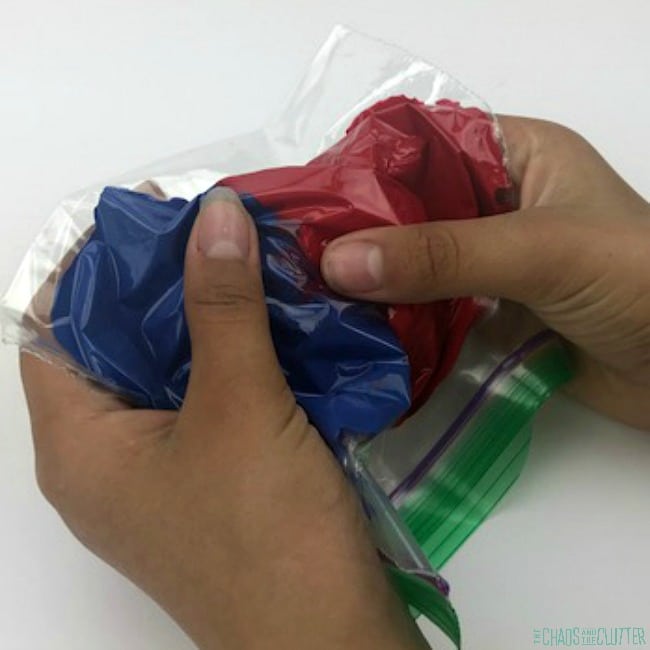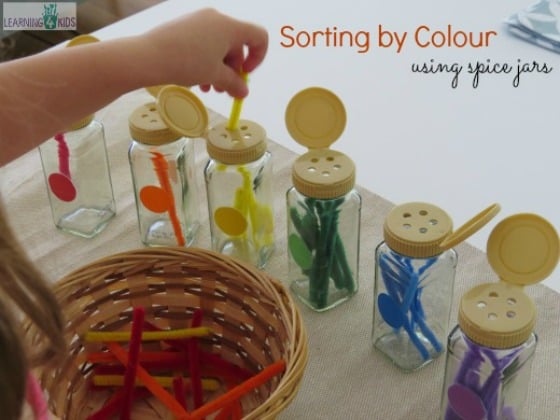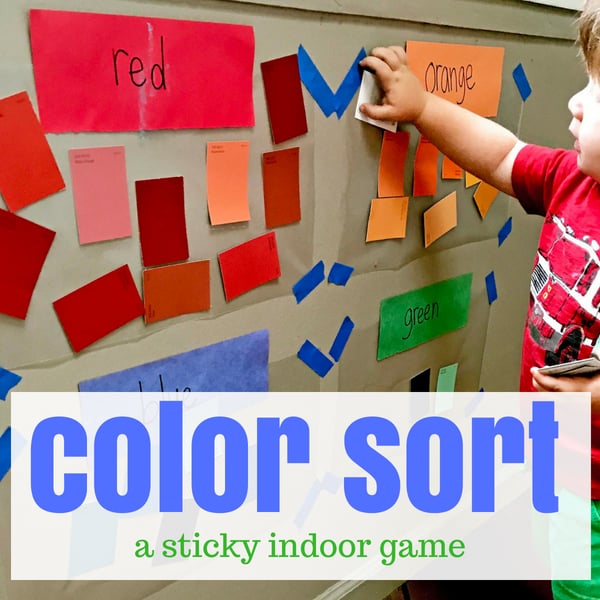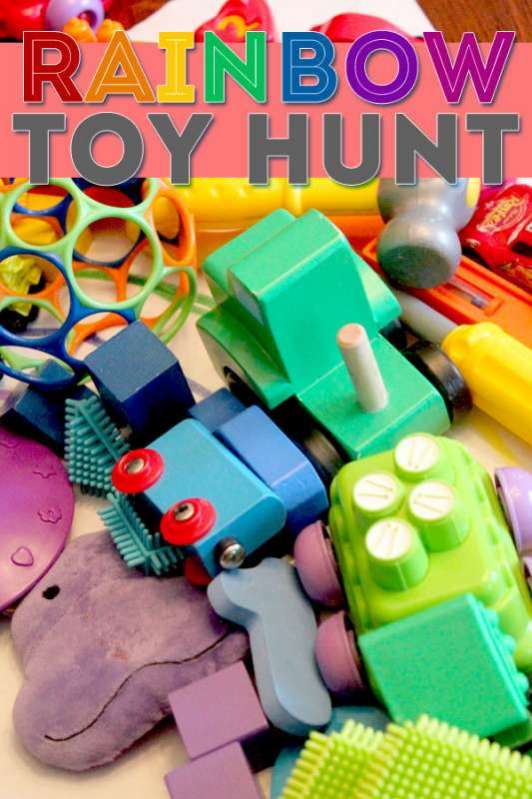20 Hands-On Activities for Learning Colors
These hands-on activities for learning colors are such a fun way to teach and reinforce important preschool and kindergarten concepts.
Preschoolers can have fun while learning colors with a variety of simple activities. For example, playing with a color wheel and matching different shades of the same color, observing food items and sorting them according to their colors, or creating art projects such as painting shapes in different colors.
All of the color activities featured here will help young children practice their color recognition skills enjoyably and creatively!

Learning Colors Hands-On Activities
Learning the colors of the rainbow is an important part of preschoolers’ cognitive development. Through color recognition and matching activities, kids learn to differentiate between basic colors, recognize patterns, and expand their visual-spatial awareness.
Color learning activities can also help foster creative thinking and problem-solving skills in children as they engage in imaginative play throughout the preschool years and beyond.
Why Color Recognition Should Be Fun and Engaging
Color recognition activities need to be engaging and enjoyable for younger children for them to learn effectively.
Engaging in activities such as matching, sorting, or painting can ignite a child’s curiosity and help them remain focused on the task at hand.
Through stimulating play, they can discover the pleasure of exploration while also learning valuable skills.
When should kids learn colors?
Kids usually start to recognize and name colors by age 3. When learning colors, preschoolers typically start with primary colors (red, blue, and yellow), followed by secondary colors (orange, green, and purple), and then tertiary colors.
To facilitate learning, parents should create fun activities like sorting objects by color or playing games like I Spy where little children need to find something that’s a certain color.
Fun Ways to Teach Colors
Teaching colors to kids can be a fun and engaging process.
From singing songs about colors to creating art projects with different hues, there are plenty of creative opportunities to introduce young children to the world of colors.
Below, we will explore some of the most enjoyable and effective ways parents can help their children learn their colors.
This post is packed with wonderful ideas designed to help your toddlers learn their colors.
This color-themed eye dropper activity tray for preschoolers is sure to keep them engaged! It includes colorful vials, an eye dropper, and different types of colored liquids.
Kids can use the eyedropper to fill each vial with a different color and then mix the colors to form new colors.
It's educational, has lots of fun, and is perfect for helping young children explore the concept of color while also developing their fine motor skills.
Preschoolers will love creating their own “I See a Rainbow” booklet with stickers and/or markers.
This activity provides an opportunity for children to explore the different colors of the rainbow in a fun, creative way.
They can use their imaginations to draw and decorate each page with bright colors, inspiring them to learn about the colors around them.
Little ones will sing this catchy color-mixing tune all day long, learning about the different colors as they play.
They're sure to love exploring various color combinations through their experiments.
By doing these activities, preschoolers develop visual perception skills as well as a general understanding of how colors mix.
From paint chip sorting cards to homemade playdough, young learners will have a blast learning about colors with the six activities featured here.
They can explore color mixing with experimentation and learn to recognize different shades of the same color.
With a variety of engaging activities, preschoolers can develop their color-sorting skills in a fun and creative way.
Recycle old spice jars by turning them into a fun and educational color-sorting activity.
This activity helps to promote fine motor skills as well as hand-eye coordination for preschoolers.
Kids will enjoy discovering which colors go in each jar, while adults can appreciate the benefit of upcycling and teaching kids about recycling at the same time!
Once your kids have finished fishing for colors, you can turn this game into an activity that focuses on numbers and/or letters too.
Adults can create colored paper fish with numbers or letters written on them.
You can even provide additional fun by allowing the kids to draw the shapes of the numbers or letters for extra visual recognition.
This simple color-matching game is easy enough for toddlers to do, but still engaging and stimulating enough for preschoolers and kindergartners.
The sorting activity also serves as an introduction to early learning concepts such as color recognition and sorting, which can be a great foundation for more complex educational activities further down the line.
This color-sorting activity requires a little bit of preparation, but it will be worth the effort when your kids are enjoying sorting colors, developing their fine motor skills, and learning how to work with others.
A bonus is that this game can be adapted and tailored according to the players involved, making it suitable for both young children and older kids who may want a more challenging version.
With enough practice, this activity can become an excellent tool for helping kids learn basic concepts such as shape and color recognition as well as classification.
Children of all ages will love this fun color-matching file folder game, which helps them develop awareness and recognition of different colors as well as one-to-one correspondence.
It's a great opportunity to reinforce important early learning concepts while also fostering problem-solving skills.
Additionally, it can be adapted for different age groups so everyone can get involved and have a blast!
With this DIY egg carton color sorting activity, you can help your kids learn to recognize and practice color words while honing their matching skills.
Building the carton will also give them a chance to work on their motor skills with hands-on play that allows them to be creative.
Preschoolers will love working on colors with this unicorn color-matching worksheet.
It's hands-on fun for little ones and encourages them to develop their motor skills and creativity.
Additionally, the vibrant colors and simple design make a great activity for children of all ages that can also be used as a teaching tool.
Draw a caterpillar on the bottom of a box - this simple game encourages kids to develop their motor skills and recognize different colors.
Have them sort pom poms and/or colored buttons into each section of the caterpillar's body, forming an imaginative and fun challenge.
The activity also helps with counting skills and encourages problem-solving abilities as children figure out how to match the correct shapes and colors together.
This simple umbrella counting and color sorting activity are perfect for both group and individual work - it's a great way to get children working together and engaging in collaborative play.
It encourages kids to recognize different colors, numerals, and shapes while also teaching them how to count to ten.
Your preschoolers are sure to have a blast while gathering their toys and sorting them into a toy rainbow!
This activity encourages fine motor skills, color recognition, constructive play, and problem-solving abilities.
Not only will it allow your preschoolers to be creative, but it'll also help them develop essential skills for learning in the classroom.
I love simple busy bag activities that entertain kids while keeping them occupied and engaged for a little bit.
This rainbow color sorting busy bag is perfect for tots and preschoolers alike - they get to sort colored craft sticks into matching pockets according to their hue.
Not only is it engaging and fun, but it also provides a great opportunity for learning color recognition skills.
And since it's a busy bag activity, they can take it with them anywhere or save it for another day.
Train lovers will be thrilled to explore colors as they paint with toy trains.
If you don't have toy trains, no problem! You can easily grab some cheap toy cars from the Dollar Store that work just as well.
Not only is this a fun and creative activity for your little one, but it also helps develop their hand-eye coordination and motor skills - plus it's an inexpensive way to keep them entertained for hours!
Squirt some paint in an empty water bottle, add a few marbles, and let your kids shake them up as they explore color mixing with this hands-on activity.
They will love to watch the colors mix and swirl around inside the bottle and create some unique art!
This is a great way for children to learn about color theory and the principles of combining colors without needing any special tools or materials.
Plus, it also introduces new concepts like cause and effect, so they're learning while having fun!
Let your tots explore colors and textures by coloring on sandpaper.
By naming each color as they use it, they will learn to recognize the different shades and develop a better understanding of their chosen palette.
Not only is this activity fun and creative, but it also helps them to learn basic visual-spatial skills that can be used in other areas of development.
Plus, it encourages fine motor skills which are essential for writing later on!
This fine motor activity encourages students to match colored clothespins to colored stickers to create a cute turkey.
Kids will love picking out all the different colors and pretending they're creating their own Thanksgiving feast.
It's also a great way for children to learn how to recognize, sort, and classify objects which are essential skills for lifelong learning.
Plus, it encourages concentration and helps build hand-eye coordination as well!
You can easily turn simple craft sticks into a fun color dominoes game for your preschoolers.
Gather some colorful markers and color the ends of the craft sticks.
Encourage kids to match similar color sticks together and have them build the dominoes line.
Not only is this a great way to teach coordination and cognitive skills, but it also promotes communication, as they figure out ways to work together.
Not only will this color-matching activity grab your preschooler’s attention, but it will look pretty cool hanging in your window for a bit.
Kids can have fun putting together various colored shapes and seeing what awesome designs they come up with.
Plus, the finished product is unique enough to be a fun decoration for any room! This is a great way to get creative and has some bonding time with your little ones.
There are plenty of fun and creative activities out there to help children learn about color recognition.
These activities can be used at home or in the classroom, providing an engaging way for kids to develop essential skills such as hand-eye coordination, fine motor skills, visual-spatial abilities, and more.
With so many options available, you’re sure to find something that your little one will love!
So grab some craft sticks, markers, or paints and get ready for a colorful adventure with your preschooler!

























This blog is a treasure trove of color learning activities! I’m thrilled to discover such a diverse range of ideas to teach colors to preschoolers. From sensory play to arts and crafts, each activity is thoughtfully explained and easy to implement. As a parent and educator, I can’t wait to try these activities with my little ones. Thank you for providing such a valuable resource to make color learning fun and engaging for kids! ???